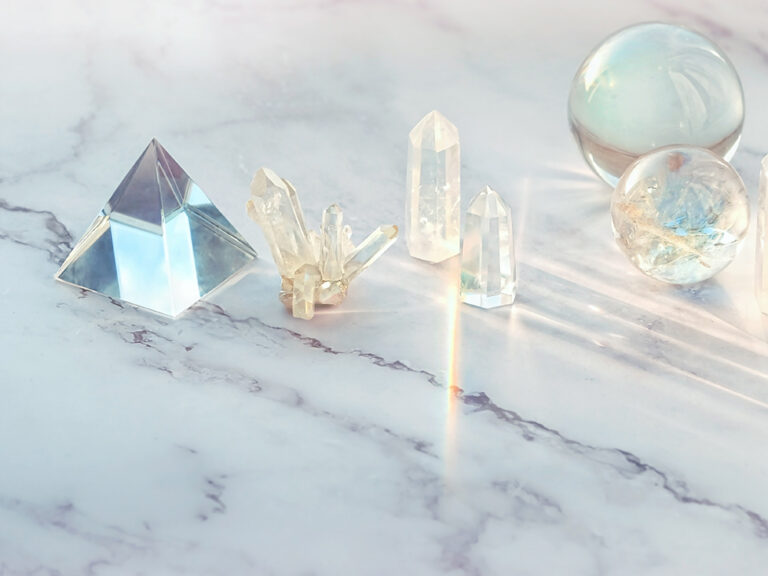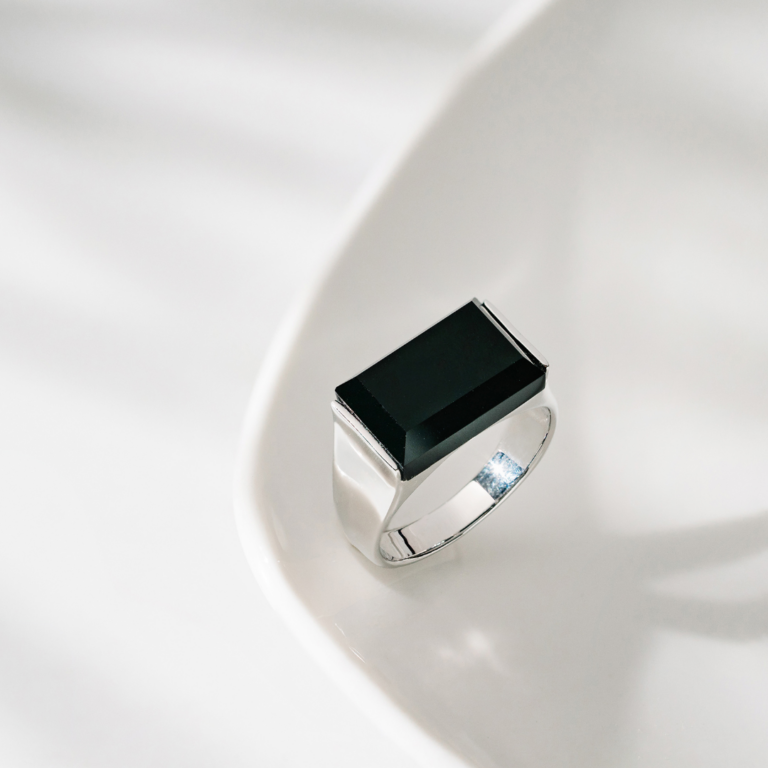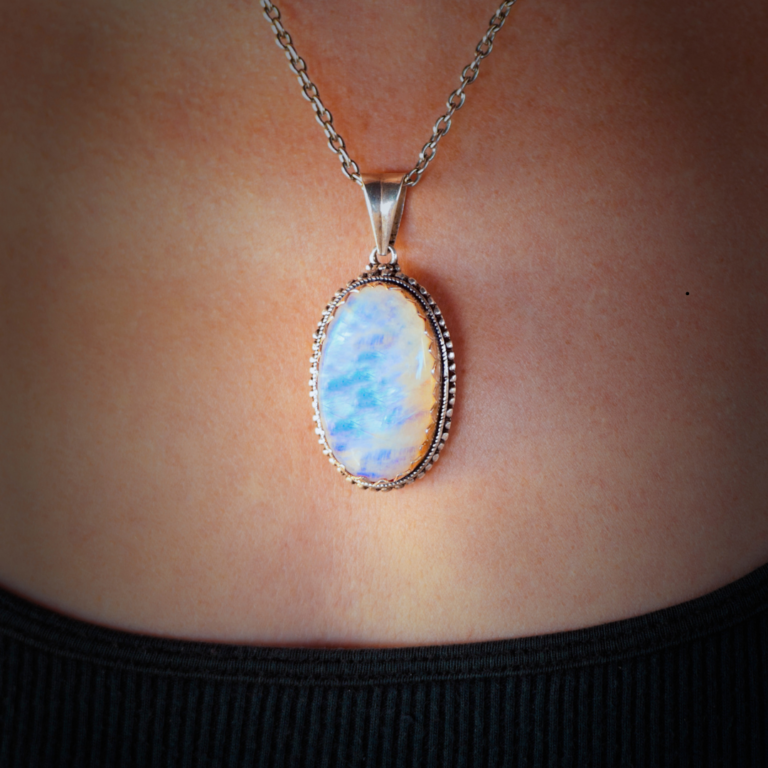Gemstones for Insomnia: Natural Sleep Aids
Struggling with insomnia can affect one’s quality of life and overall well-being. Many individuals turn to various remedies, including natural solutions such as gemstones, to seek relief. Certain gemstones, like amethyst, moonstone, and lepidolite, are believed to promote relaxation and improve sleep quality.

Amethyst is often recommended for its reputed calming properties, which can help ease the mind and relieve stress. Placing amethyst under the pillow or beside the bed might aid in achieving a more restful sleep. Moonstone is another gem associated with soothing energies that can potentially help stabilize one’s sleep cycle.
Lepidolite contains lithium, a mineral known to stabilize mood and reduce anxiety, which may contribute to a better night’s sleep. Keeping lepidolite close by during bedtime could support sleep through its tranquillizing effects. While scientific evidence is limited, many people find comfort in these gemstone traditions.
Understanding Insomnia

Insomnia is a common sleep disorder influenced by various factors. It affects health and well-being, and multiple conventional treatments are available to address it.
Causes of Insomnia
Numerous factors contribute to insomnia, impacting people’s quality of sleep. Stress and anxiety are the primary causes, often leading to prolonged sleeplessness. Medical conditions like chronic pain and respiratory issues can also prevent restful sleep.
Lifestyle choices, such as irregular sleep schedules or heavy caffeine and alcohol use, play significant roles. Environmental factors, including noise and light, also disturb sleep patterns. Understanding these causes is crucial for addressing the condition effectively.
Impacts on Health and Well-being
Insomnia affects both mental and physical health. It leads to fatigue, impaired cognitive function, and decreased productivity. Individuals often experience mood swings and irritability due to lack of sleep.
Chronic insomnia increases the risk of developing serious health problems, such as heart disease, diabetes, and hypertension. The immune system weakens over time, making individuals more susceptible to infections. Social relationships can also suffer, as poor sleep affects interactions and overall mood.
Conventional Treatment Methods
Medical and therapeutic treatments provide relief for insomnia. Cognitive Behavioral Therapy for Insomnia (CBT-I) is highly effective, focusing on changing sleep habits and establishing consistent sleep routines.
Medications, such as sedatives and sleeping pills, are commonly prescribed but should be used with caution due to potential side effects and dependency risks. Lifestyle changes, including regular exercise, maintaining a sleep schedule, and creating a comfortable sleep environment, are also recommended. Therapy and medical interventions work best when tailored to individual needs.
The Role of Gemstones in Alternative Therapy

Gemstones have been used for centuries in various cultures to promote wellbeing. These practices often rest on historical significance and theoretical principles, including energy alignment and vibrational frequencies.
History and Traditional Use
Ancient civilizations such as the Egyptians, Greeks, and Chinese believed gemstones had curative properties. Turquoise, for example, was used by Egyptians to relieve exhaustion and insomnia. The Greeks employed amethyst for its calming effects.
Chinese medicine has incorporated gemstones like jade to balance energy. These practices often appeal because they take a holistic approach, integrating physical, emotional, and spiritual health.
Specific rituals and placements of gemstones were aimed at harmonizing the body and mind. Gemstones often served dual purposes, both decorative and medicinal, enhancing their allure in historical contexts.
Theoretical Foundations
The use of gemstones in alternative therapy is underpinned by concepts of energy fields and vibrational frequencies. Crystals are thought to interact with the body’s natural energy, aligning and stabilizing it. This is based on the belief that each gemstone has unique energies.
Lithotherapy suggests that stones emit specific vibrations that can influence physiological and emotional states. This aligns with ideas of chakra balancing where different crystals correspond to various chakra points, promoting relaxation and better sleep.
While scientific evidence supporting these claims is limited, many users report subjective improvements. The theoretical frameworks provide structure to these practices, making them appealing to those seeking non-invasive sleep remedies.
Selecting the Right Gemstones for Insomnia
Choosing the right gemstones for insomnia involves understanding different types of gemstones, assessing their quality, and personalizing the selection to fit individual needs.
Types of Gemstones
Certain gemstones are believed to aid in alleviating insomnia. Amethyst is known for its calming properties. Moonstone is often associated with promoting restful sleep and emotional balance. Lepidolite contains lithium, which can induce calmness. Howlite is another gemstone thought to reduce stress and anxiety, aiding in better sleep.
These gemstones can be used as jewelry, placed under pillows, or set in the bedroom. To maximize their effectiveness, it is crucial to choose gemstones that resonate with one’s sleep issues.
Evaluating Gemstone Quality
The effectiveness of gemstones can be influenced by their quality. Clarity and colour are two significant factors. Highly transparent gemstones often have purer energy, and vibrant colours can resonate more effectively with an individual’s energy fields.
Gemstone origin also matters; natural stones are frequently more effective than synthetic ones. Carat weight isn’t as crucial for sleep aids, but it can influence the stone’s overall impact.
Personalizing Gemstone Selection
Personal taste and intuitive feeling play vital roles. An individual might be drawn to a particular gemstone due to its color, shape, or perceived energy. This personal connection can enhance the gemstone’s perceived effectiveness.
Consulting with gem therapists or doing research on specific sleep-related issues can guide better choices. It is worth noting the preference for aesthetics and practical applications, such as ease of use in sleep environments.
Methods of Using Gemstones
There are various methods for harnessing gemstones’ potential benefits for alleviating insomnia. Each technique serves a specific purpose and offers unique ways to integrate these stones into daily life.
Placement and Environment
Strategically placing gemstones in the sleep environment can promote a tranquil atmosphere. Some prefer placing amethyst or moonstone under the pillow to aid relaxation.
Others may opt to keep a crystal grid on a bedside table. This involves arranging multiple gemstones in a symmetrical pattern, which is believed to enhance their collective energy. Incorporating gemstones into bedroom decor, such as placing larger specimens on shelves, can also contribute to an overall sense of calm and stability.
Wearable Gemstone Products
Wearable products like gemstone bracelets, necklaces, or rings offer a convenient way to keep these stones close to the body. Jewelry embedded with calming stones such as lepidolite or blue lace agate is popular for their attractiveness and purported calming effects.
Crystal-infused sleep masks are another wearable option. These masks are often lined with small gemstone pieces, allowing the wearer to benefit from their presence throughout the night. Wearing these products consistently helps to maintain the gemstones’ influence over time.
Direct Application Techniques
Direct application involves physically interacting with the gemstones for a set period. Many find holding stones during meditation to be an effective method. Lying down with larger gemstones placed on the body, specifically the chest or forehead, helps target specific points believed to require healing.
Stone-infused elixirs are another technique. This involves soaking certain gemstones in water, which is then either consumed or used as a topical spray before bedtime. It is essential to research and use only non-toxic stones for this purpose.
Scientific Evidence
Scientific research on the impact of gemstones on insomnia is a developing field. Experts’ views on the matter vary, with some supporting the benefits while others remain skeptical.
Research Studies and Findings
Scientific studies focused on gemstones for insomnia are limited. Most available research explores the broader subject of alternative therapies for sleep disorders. For instance, a 2018 study published in the Journal of Alternative and Complementary Medicine investigated the effects of crystals and gemstones on various health conditions, including sleep disturbances.
The findings indicated potential benefits but called for more rigorous and larger-scale studies to confirm these effects. Another research project in 2020 found placebo effects to be a significant factor, suggesting that the user’s belief in the gemstone’s power could influence the outcome rather than the gemstone itself.
Expert Opinions
Experts have mixed views on the efficacy of gemstones for treating insomnia. Some practitioners in the field of holistic medicine advocate for the use of gemstones like amethyst or moonstone, citing anecdotal evidence and historical use in various cultures. They argue that these stones can promote relaxation and improve sleep quality when placed under the pillow or worn as jewelry.
Conversely, mainstream medical professionals remain cautious. They emphasize the importance of evidence-based treatments like cognitive-behavioral therapy and medication. Some experts also warn against relying solely on gemstones for treating insomnia, advising that they should be used as a complementary therapy rather than a primary solution.
Integrating Gemstones with Other Therapies
Combining gemstones with other alternative therapies and professional health guidance can enhance their benefits for insomnia. It is important to integrate these methods carefully and seek expert advice when necessary.
Complementary Alternative Therapies
Gemstones can be used alongside aromatherapy, which involves essential oils known for their calming effects. For example, lavender oil combined with amethyst can promote relaxation and better sleep.
Meditation and mindfulness practices paired with gemstones like moonstones help in achieving mental peace. Placing these stones around the meditative space or holding them focuses the mind on restful energies.
Acupuncture sessions can be complemented with jade stones. While acupuncture targets specific points to alleviate insomnia, jade enhances the therapy by promoting overall tranquillity.
Crystals can be used with sound healing techniques. Crystal singing bowls, in particular, utilize the inherent vibrational qualities of gemstones for a calming effect. This combination can help align the body’s natural rhythms for better sleep patterns.
Working with Health Professionals
It’s crucial to consult with healthcare providers when integrating gemstones into therapy. Health professionals can offer insights into safe practices and whether certain stones interact with existing medical treatments.
Discuss insomnia symptoms comprehensively with therapists or doctors. This ensures a holistic approach, combining conventional medicine and gemstone therapy for tailored treatment plans.
Sleep therapists may suggest specific gemstones for use in conjunction with cognitive-behavioural therapy (CBT). This dual approach targets both mental and physical stressors that affect sleep.
Naturopaths can advise on combining gemstone therapy with herbal treatments. Their expertise helps in selecting complementary herbs that work well with the chosen crystals, thus enhancing the overall treatment efficacy.
Integrating these approaches under professional guidance maximizes benefits while ensuring safety and effectiveness in managing insomnia.
Practical Tips for Insomnia Management
Creating a restful sleep environment is essential. Turn off all electronic devices and ensure the room is dark and quiet. The temperature should be comfortable. Consider using blackout curtains and earplugs if necessary.
Maintain a consistent sleep schedule. Going to bed and waking up at the same time each day helps regulate the body’s internal clock, improving sleep quality over time.
Avoid stimulants such as caffeine and nicotine, especially in the evening. These can interfere with the ability to fall asleep. Opt for calming beverages like herbal tea instead.
Incorporate relaxation techniques. Practices such as meditation, deep breathing, or gentle yoga before bed can reduce stress and promote relaxation.
A comfortable mattress and pillows are crucial. A mattress that is too firm or too soft can cause sleep disturbances. Choose pillows that support the neck properly.
Limit naps during the day. If naps are necessary, keep them short, around 20-30 minutes to avoid disrupting nighttime sleep.
Establish a bedtime routine. Engaging in calming activities like reading or taking a warm bath signals to the body that it’s time to wind down.
Adequate physical activity during the day can aid sleep. Regular exercise helps you fall asleep faster and enjoy deeper sleep.
Nutrition plays a role in sleep. Avoid large meals and heavy snacks before bed. Consuming a light snack, such as a banana or a small portion of protein, can be beneficial.
Monitor screen time in the evening. Blue light from phones and computers can disrupt the production of melatonin, a hormone that regulates sleep. Consider using bedtime mode or blue light filters.
If insomnia persists despite these tips, it may be helpful to consult with a healthcare provider. They can offer additional strategies or treatments to improve sleep quality.
Safety Considerations
The use of gemstones for insomnia has potential benefits but also comes with specific limitations and risks. Users should be aware of these aspects to make informed decisions and avoid adverse effects.
Understanding Limitations
Gemstones are not a substitute for medical treatment for insomnia. While they may offer comfort or placebo effects, scientific evidence to support their effectiveness is limited. Users should always consult healthcare providers for persistent sleep issues.
Additionally, individual responses to gemstones can vary significantly. What works for one person might not work for another. Limitations in quality and authenticity also present concerns. Poor-quality stones or imitations may not provide the desired effects.
Finally, gemstones may need to be used consistently over time to see any potential benefit. Immediate results are unlikely, and patience is required.
Identifying Risks and Contraindications
Certain gemstones can cause allergic reactions or skin irritations, especially when worn in jewelry. Sensitive individuals should perform patch tests before prolonged use.
Pregnant individuals should be cautious, as the effects of some stones on pregnancy are not well-studied. Consulting with a healthcare provider is advised.
Children should also be monitored closely if using gemstones for insomnia. Small stones pose a choking hazard, and their effects on children are not clearly understood.
Lastly, relying solely on gemstones could delay necessary medical treatments for underlying conditions causing insomnia. Always prioritize professional medical advice.
Maintenance and Care of Gemstones
Proper maintenance and care of gemstones are crucial to ensuring their longevity and effectiveness. Neglecting gemstone care can damage them, reducing their aesthetic and therapeutic properties.
Cleaning
- Use a soft, lint-free cloth for regular wiping.
- For deeper cleaning, soak gemstones in a solution of mild soap and lukewarm water.
- Avoid using harsh chemicals, which can damage the stone.
Storage
- Store gemstones separately to prevent scratching.
- Use a soft pouch or a lined jewelry box.
- Keep gemstones away from extreme temperatures and intense light.
Handling
- Handle with clean, dry hands to prevent oils and dirt transfer.
- Avoid dropping or knocking gemstones, which can cause chipping.
Recharging and Cleansing
- Periodically cleanse the gemstones by rinsing them under running water.
- Some gemstones benefit from being placed in natural sunlight or moonlight for recharging.
- Be cautious with sunlight, as some stones can fade.
Regular Inspections
- Check for signs of damage, such as cracks or chips.
- Inspect settings if gemstones are part of jewelry to ensure they are secure.
- Take damaged gemstones to a professional for repair.
Using these practical steps helps maintain the beauty and function of gemstones.
Summary and Final Thoughts
Many believe gemstones offer natural ways to alleviate insomnia.
Amethyst is often cited for its calming properties. Placing an amethyst under the pillow may help with restful sleep.
Sodalite is another popular choice. It is said to balance emotions, promoting a sense of calm that can assist with sleep challenges.
Lepidolite contains lithium and is thought to reduce stress, potentially aiding in falling asleep more easily.
Moonstone is linked to intuitive energies. It may enhance sleep by harmonizing the body’s natural rhythms.
Howlite might be helpful for those experiencing an overactive mind. It is believed to have a soothing effect.
Hematite is sometimes used for grounding and may stabilize disordered sleep patterns.
Although these gemstones are popular for sleep issues, their effectiveness varies from person to person. For the best outcome, always consider combining gemstone use with conventional methods.







